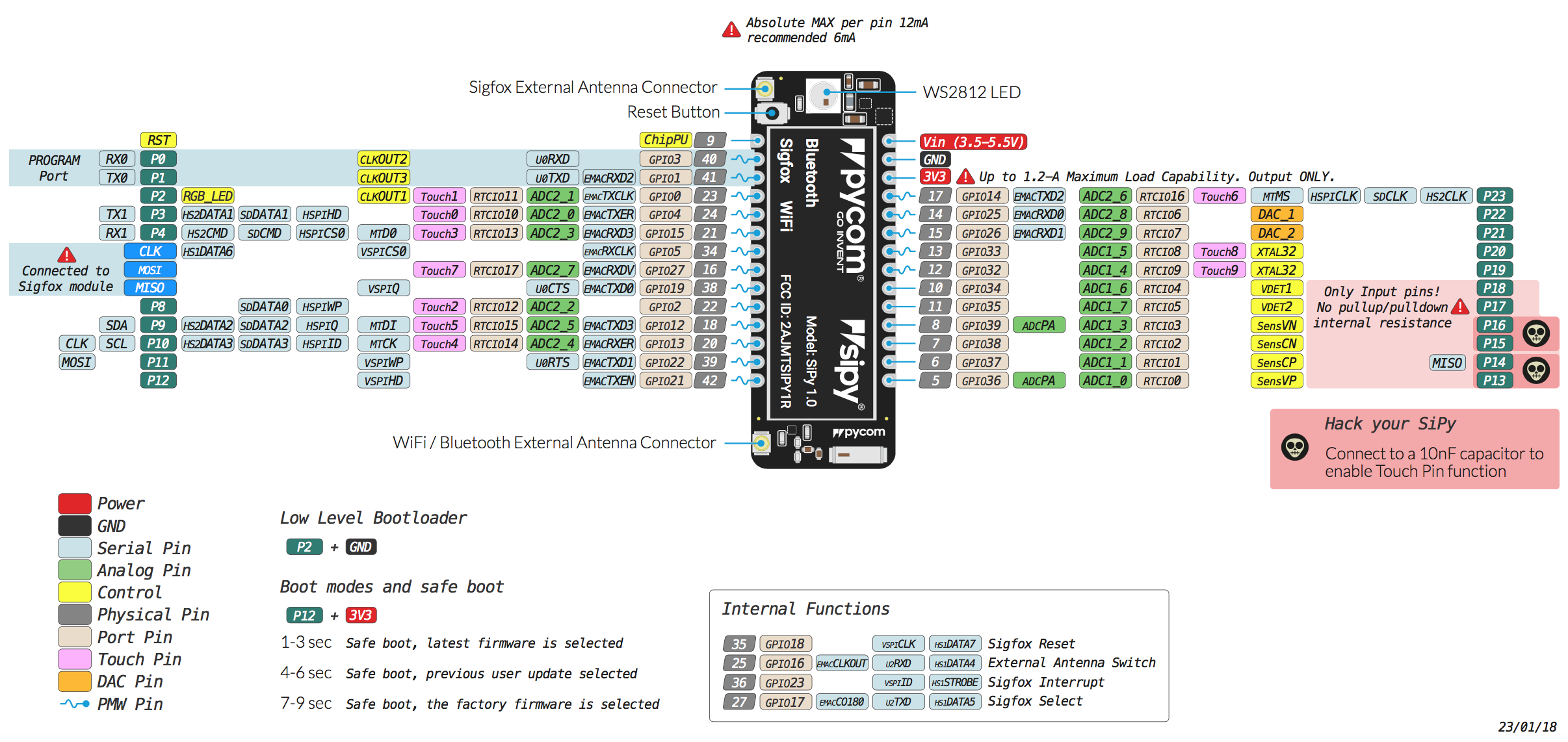SiPy

Store: Buy Here
Getting Started Click Here
Pinout
The pinout of the SiPy is available as a PDF File.
Please note that the PIN assignments for UART1 (TX1/RX1), SPI (CLK,MOSI,MISO) and I2C (SDA,SCL) are defaults and can be changed in Software.
Datasheet
The datasheet of the SiPy is available as a PDF File.
Notes
WiFi
By default, upon boot the SiPy will create a WiFi access point with the
SSID
sipy-wlan-XXXX
, where XXXX is a random 4-digit number, and the password
www.pycom.io.
Power
The Vin pin on the SiPy can be supplied with a voltage ranging from
3.5v to 5.5v. The 3.3v pin on the other hand is output only, and must
not be used to feed power into the SiPy, otherwise the on-board regulator
will be damaged.
Deep Sleep
Due to a couple issues with the SiPy design the module draws more current than it should while in deep sleep. The DC-DC switching regulator always stays in high performance mode which is used to provide the lowest possible output ripple when the modules is in use. In this mode, it draws a quiescent current of 10mA. When the regulator is put into ECO mode, the quiescent current goes down to 10uA. Unfortunately, the pin used to control this mode is out of the RTC domain, and therefore not usable during deep sleep. This causes the regulator to always stay in PWM mode, keeping its quiescent current at 10mA. Alongside this the flash chip doesn't enter power down mode because the CS pin is floating during deep sleep. This causes the flash chip to consume around 2mA of current. To work around this issue a "deep sleep shield" is available that attaches to the module and allows power to be cut off from the device. The device can then be re-enabled either on a timer or via pin interrupt. With the deep sleep shield the current consumption during deep sleep is between 7uA and 10uA depending on the wake sources configured.
Tutorials
Tutorials on how to the SiPy module can be found in the examples section of this documentation. The following tutorials might be of specific interest for the SiPy:
